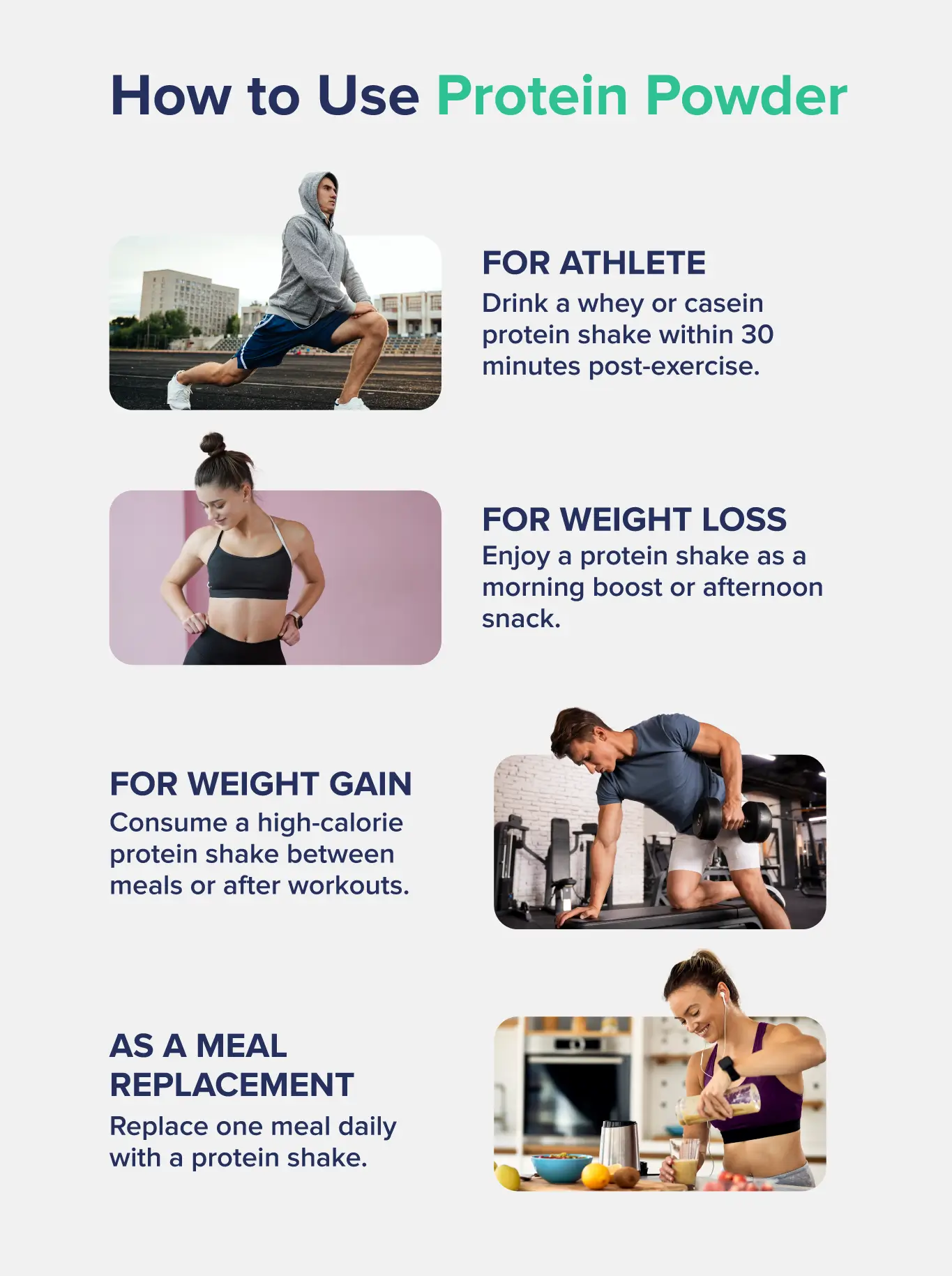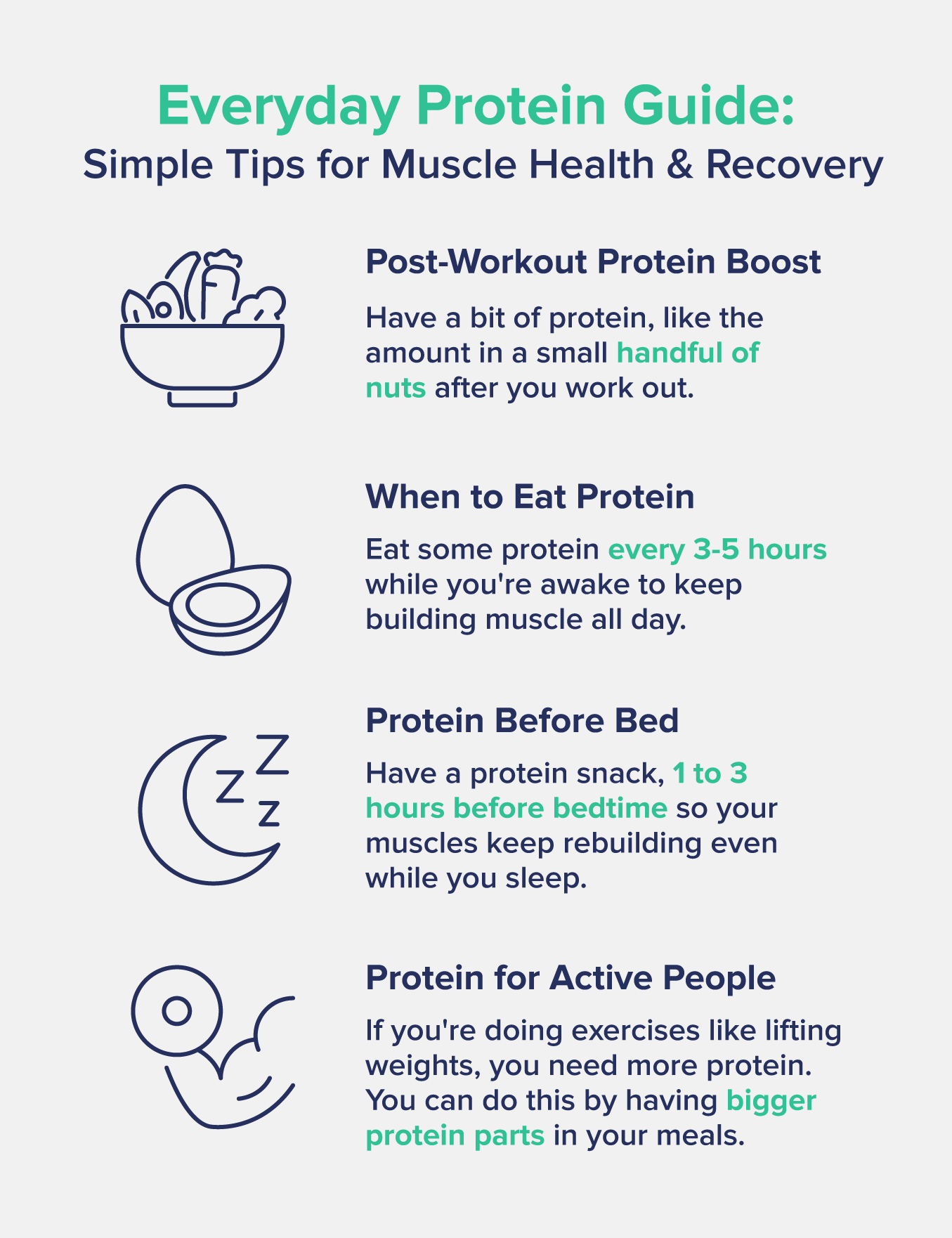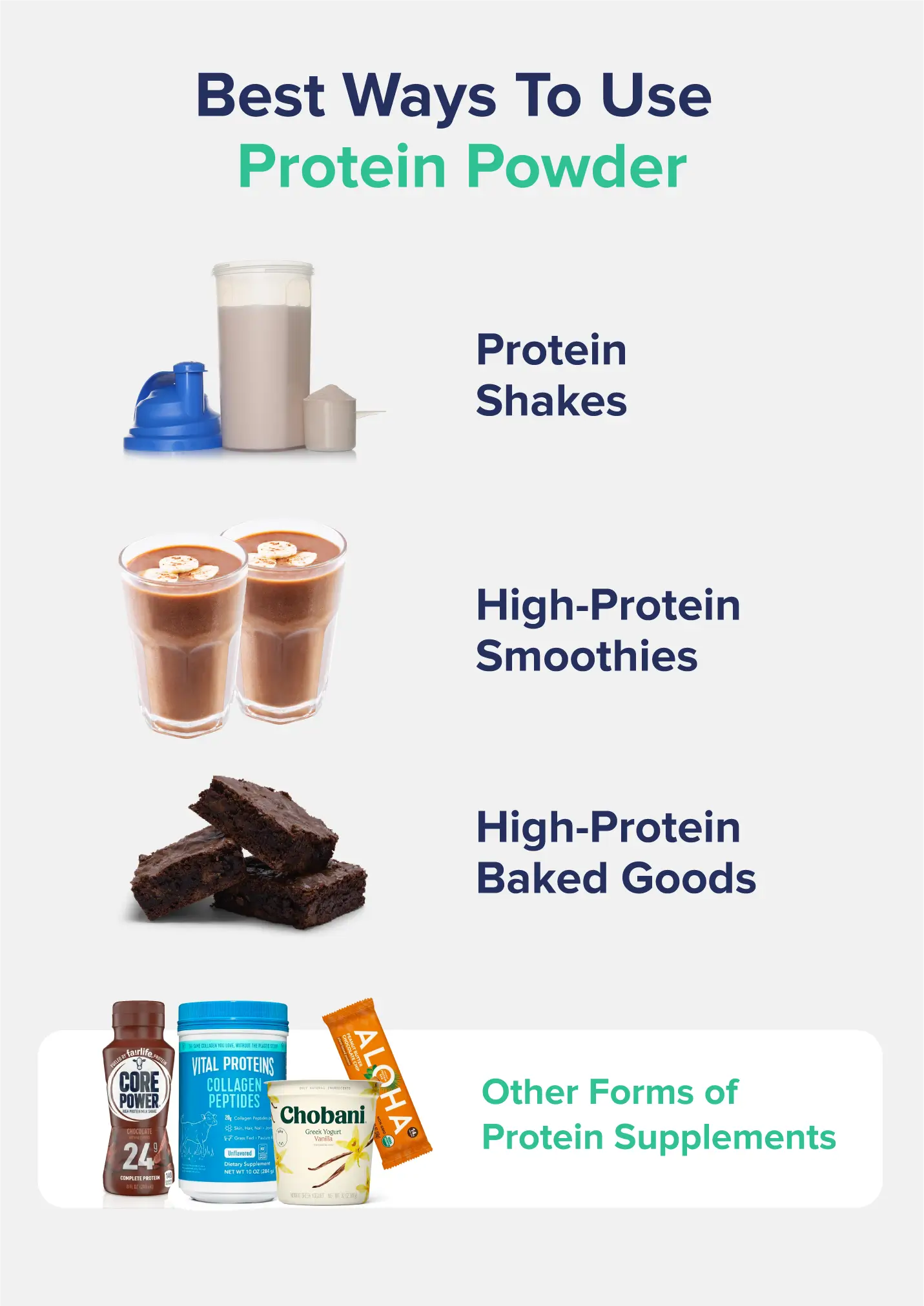Try our favorite, clean protein powder: See our top pick →
Try our favorite, clean protein powder: See our top pick →
This post contains links through which we may earn a small commission should you make a purchase from a brand. This in no way affects our ability to objectively critique the products and brands we review.
Evidence Based Research To fulfill our commitment to bringing our audience accurate and insightful content, our expert writers and medical reviewers rely on carefully curated research.
Read Our Editorial Policy
Protein powder is among the most beneficial supplements for stimulating muscle growth, improving post-workout recovery, and enhancing weight loss.
However, where protein powder shines is its ability to supplement a high-protein diet, which is highly recommended for both athletes and individuals looking to lose weight.
With so many forms of protein and protein powder on the market and loads of information online, adding a protein supplement to your diet can feel overwhelming.
To help simplify things for you, we’ll cover (almost) everything about protein powder: its health benefits, how much protein to eat daily, and the types of protein powders.
But first, let’s explain how to best utilize protein powder to achieve your goals.

The use of protein powder among athletes is prolific. And it’s not just weightlifters and bodybuilders!
Even legendary athletes––such as Venus Williams, Michael Phelps, and Lewis Hamilton (who is vegan and enjoys plant-based protein)—use protein to help maximize their performance.
That’s because protein powders like whey and casein are some of the most bioavailable forms of protein, which the body can more efficiently utilize for muscle gain, recovery, and repair.
But it’s not just athletes. Drinking protein shakes can be beneficial for untrained individuals, too.
Whether you’re new to exercise or not, increasing your protein intake will lead to strength gains and increased muscle mass and even reduce the severity of the dreaded DOMS (delayed onset muscle soreness) after resistance training.
As for when to take it, try to drink your protein shake after your workout to prevent digestive discomfort that can occur when working out on a full stomach.
Besides supporting muscle protein synthesis, protein powder can also help you lose weight, gain muscle, maintain weight, and preserve lean muscle mass if you’ve already reached your goal weight.
Studies have even shown that consuming a high-protein diet has protective effects against body weight gain even when eating above your daily calorie needs.
The mechanisms for this are partly due to the thermic effect of food (TEF) and the fact that when you increase your protein intake, you are satiated more quickly and don’t get hungry as soon as you might with a high-carb or high-fat meal.
Alongside resistance training and following the CICO (calories in, calories out) method, your body fat mass will decrease, and your body composition will improve.
Protein powder can easily be used in your weight loss journey since it is a quick and convenient source of nutrients and protein while still being relatively low in calories.
Try drinking a protein shake with a post-workout breakfast to keep you full until lunch or as an after-dinner snack to prevent late-night cravings.
Gaining weight with a fast metabolism or building muscle mass without packing on fat can be quite a challenge.
To gain weight healthily and build lean muscle mass, you must consume more calories, primarily through protein-rich foods, alongside a healthy diet.
Adequate protein intake is essential for this process and can ensure optimal muscle growth without significantly increasing body fat percentage.
If you’ve ever heard the advice to not “drink your calories,” you should ignore this rule when you want to gain weight.
Drinking your calories in the form of nutrient-dense protein shakes can help immensely with gaining weight.
Mass-gainer shakes are purposefully made to help with weight gain, amd you can easily create your own tasty, high-calorie protein shakes at home by adding fruits and healthy fats, such as nut butter or avocado.
Be sure to drink this after a workout or a couple of hours before your next meal so you won’t be too full when you exercise or eat.
Spacing out your meals like this will help you avoid the fatigue of eating a high-calorie diet.
Protein powder is an excellent option if you’re in a rush and looking for an easy and quick replacement for your usual breakfast or lunch to take to work or on a trip.
You should not make protein shakes a regular replacement for dietary protein and nutrients, but it’s a good option for various situations.
You should be sure you are choosing high-quality protein powders and that the main ingredient is a complete protein or contains additional amino acids that make the protein complete.
Say you do want to consume protein powders as a semi-regular meal replacement.
In this case, consider looking for more well-rounded products with a good ratio of carbs, fats, protein, and micronutrients.
Also, avoid products containing fillers and artificial additives, preservatives, or sweeteners. These ingredients are not inherently harmful, but when consumed regularly, they can lead to digestive problems associated with the gut microbiome.
Now that you know how to use protein powder for your particular goal, let’s dive deeper into some of the basics you should know and how to effectively add protein supplements to your diet.

Eating a high-protein diet has many benefits for your health and physical performance, especially for weight loss and building muscle mass.
Protein helps lower body weight in a few ways: it helps your body produce the satiety hormones GIP and GLP-1, reduces ghrelin (the hunger hormone), and induces a higher thermic effect of food (TEF), the energy your body uses to digest food.
However, the only way you’ll see strength gains and muscle growth is when you pair a high-protein diet with resistance training, such as lifting weights or using cable machines.
This is because a higher protein intake is associated with improved muscle protein synthesis, preservation of lean mass, and post-workout recovery.
However, reaching your protein goals with just dietary protein (protein from plants and animals) alone can be difficult, and getting your protein from multiple sources is more beneficial for your health.
Whey and casein protein are also more easily digested and synthesized by the body than many other protein sources, even those from animals.
Here are the benefits of drinking a daily protein shake:
*has all nine essential amino acids required for muscle growth
It’s not enough to just drink one protein shake and call it a day for your protein intake.
To reap the health, weight loss, and muscle-building benefits of protein, you need to eat enough to see results.
Your total daily protein intake should be between 1.6 to 2.2g of protein per kilogram of body weight per day, depending on your activity levels.
If you’re not used to eating that much, getting all your protein solely from protein-rich foods can be difficult.
Luckily, one serving of whey protein powder (one of the most common protein supplements) is high in protein and the amino acids required for muscle protein synthesis.
You can also get the same benefits from a plant-based protein powder if it contains ingredients that make it a complete protein.
One to two shakes a day alongside plant and low-fat animal protein is a great way to achieve a healthy, balanced, high-protein diet.
New protein powders are constantly being released, and honestly, we’re as overwhelmed by the options as you probably are!
To make things easier on you, here are a few of the most common protein powders you can choose from:

The tried and true way of enjoying protein shakes is to keep things simple: add water to a shaker cup with a scoop of protein, shake, and enjoy.
You can also add dairy milk for added flavor, protein, and improved texture. This is an excellent trick if you’re bulking (trying to gain weight).
Be mindful that drinking so much dairy at once can be hard on the stomach, so consider dairy-free options like almond, soy, or oat milk to see if they appeal to your taste buds and digestive system more.
You could also blend up a protein smoothie with vanilla or chocolate protein powder.
Popular high-protein smoothie ingredients include:
There are many ways to increase the protein content of your favorite desserts, such as muffins, cake, cookies, and more, using protein powder combined with high-protein ingredients.
While it might sound off-putting to add pantry staples like black beans to your brownies or make chocolate hummus from chickpeas, these are excellent ways to satisfy the occasional craving for sweets while still being able to reach your protein goals.
Lastly, though it’s not a baked good, we have to mention overnight oats in this list. These are a killer high-protein, high-complex carbohydrate combo for a pre-workout snack.
By adding a scoop of protein powder, some low-fat Greek yogurt, and chia seeds, a single serving could have 40+ grams of protein!
While protein powder is the best protein supplement, we get that sometimes you need to change it up.
Here are a few other popular high-protein alternatives to protein shakes you can find at most grocery stores:
Collagen powder: When it comes to collagen, our pick is Vital Proteins’ Collagen Peptide Powder.
You can drink as much protein powder as you like right away. However, some people can’t tolerate shakes as well as others. So, start with one shake a day to see how your digestive system reacts, and play around with the protein-to-water ratio, especially if you have a sensitive stomach. Drink it slowly and enjoy!
You can mix it with water, dairy milk, or non-dairy milk. Some people prefer to drink it with dairy or non-dairy milk for additional flavor and improved texture. You can also make smoothies with protein powder and other ingredients like bananas, berries, Greek yogurt, or nut butter. You can also make baked goods with protein powder or mix it into overnight oats or Greek yogurt.
You can purchase single-serving packets of protein powder. However, a more sustainable and cheaper option would be to add a scoop of protein powder to your shaker cup, seal it tight, and add water when you’re ready to drink it at work.
You can take protein powder every day to help you reach your optimal protein intake. However, you need to ensure you are also getting dietary protein from animal and plant sources to get a good balance of micronutrients. Animal proteins low in saturated fats like skinless chicken breast, lean beef, egg whites, white fish, low-fat Greek yogurt, and cottage cheese are great options. Plant sources of protein should be combined with grains, nuts, legumes, and seeds to get all of your essential amino acids.
Subscribe now and never miss anything about the topics important to you and your health.